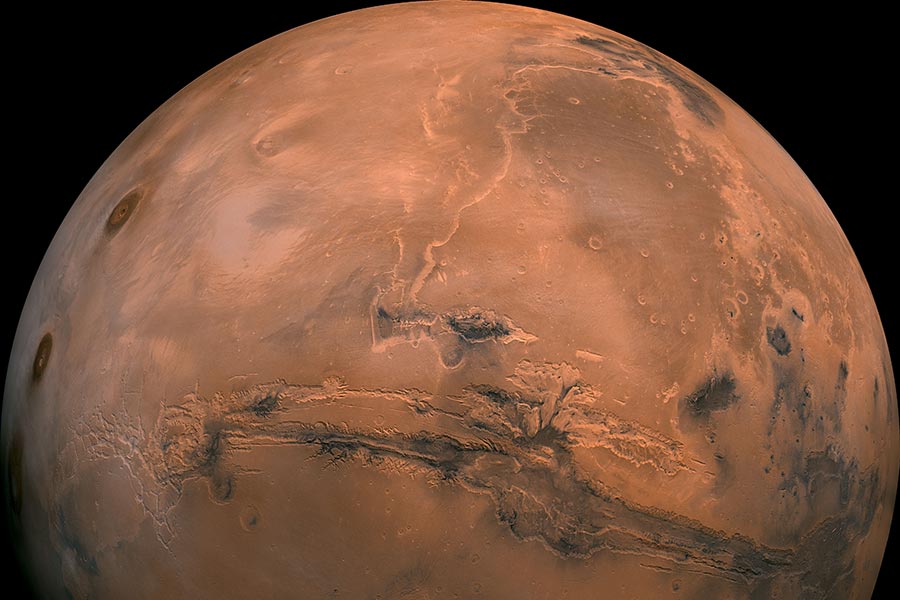Scientists find evidence of an underground water system on MARS – could it have supported alien life?

(Natural News) Scientists reveal that Mars Express found geological evidence indicating the presence of interconnected lakes that once lay deep beneath the Martian surface. Some experts say that this discovery hints that the Red Planet once harbored life.
The conditions in Mars billions of years ago were, in theory, very similar to Earth – meaning Mars had liquid water and an atmosphere. However, solar winds bombarded the planet and slowly stripped away its atmospheric gases. Consequently, as the Martian atmosphere got thinner and thinner, it became less likely to support liquid water on its surface.
Today, Mars appears as a barren world. But its surface show signs that it used to have copious amounts of water. Previous studies suggest that some geological features of Mars, like branching flow channels and valleys, needed water to form. In fact, just a year ago, scientists found evidence that Mars had liquid water beneath the surface of the planet’s south pole. (Related: NASA announcement of liquid water on Mars confirms what we’ve been reporting for years.)
Deep Martian craters hint at the planet’s watery past
In a new study, led by Francesco Salese of Utrecht University in the Netherlands, researchers collated images from the European Space Agency’s (ESA) Mars Express mission to locate an underground water complex that was previously predicted by computer models. They published their findings in the Journal of Geophysical Research: Planets.
“Early Mars was a watery world, but as the planet’s climate changed this water retreated below the surface to form pools and ‘groundwater’,” said Salese. “We traced this water in our study, as its scale and role is a matter of debate, and we found the first geological evidence of a planet-wide groundwater system on Mars.”
Support our mission to keep you informed: Discover the extraordinary benefits of turmeric gummy bears and organic "turmeric gold" liquid extract, both laboratory tested for heavy metals, microbiology and safety. Naturally high in potent curcuminoids. Delicious formulations. All purchases support this website (as well as your good health). See availability here.
The researchers looked at 24 deep, enclosed craters in the northern hemisphere of Mars. Each of these craters stretches thousands of meters below the surface. In fact, the researchers estimate that the bottom of each crater lies 4,000 m below Martian sea levels – an arbitrary number based on Martian elevation and atmospheric pressure.
Researchers found that many features inside the crater could have only formed in the presence of water. This includes channels, valleys, curved deltas, and ridged terraces, as well as fan-shape deposits of sediments. The water levels indicated by underground formations also coincide with the proposed level of shorelines of a Martian ocean that is thought to have existed billions of years ago.
“We think that this ocean may have connected to a system of underground lakes that spread across the entire planet,” said Gian Gabriele Ori, co-author of the study. “These lakes would have existed around 3.5 billion years ago, so may have been contemporaries of a Martian ocean.”
Additionally, upon closer inspection of the craters, researchers found that five of the craters indicated the presence of minerals like clay, carbonates, and silicates. These findings contribute to the idea that Mars might have hosted life many years ago.
“Findings like this are hugely important; they help us to identify the regions of Mars that are the most promising for finding signs of past life,” said Dmitri Titov, ESA’s Mars Express project scientist.
Many studies support that Mars was once a warm and wet world. However, whether the presence of liquid water once supported life on the Martian surface remains unknown.
Sources include:



